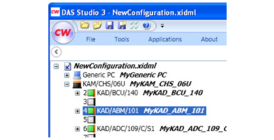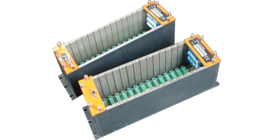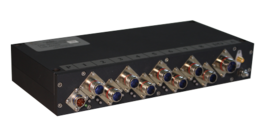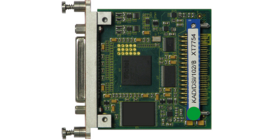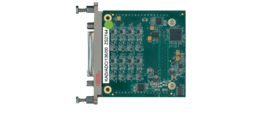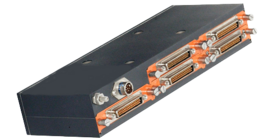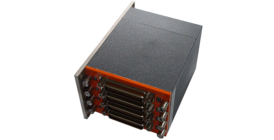
- Overview
- Specifications
- Downloads
- Featured Products
- Request a Quote
- Product Support
The KAD/SWI/107 is an Ethernet tap module designed for operating in harsh environments. All connections use copper cabling, minimum specification CAT5.
Two individual ports of the KAD/SWI/107, which together implement a tap on the Ethernet link, are referred to as a tap port pair. One of these ports is referred to as the tap port; the other port is referred to as the paired tap port. The tap port pair may be configured as 10BASE-T or 100BASE-TX and connect to the external Ethernet network. The pair of aggregator/monitor ports can only be 100BASE-TX and connect directly to an Ethernet sink device such as a NET/REC/001 or a KAD/EBM/101.
The KAD/SWI/107 provides an active non-intrusive mechanism to monitor the traffic on an external network. Traffic received on each of the tap ports is forwarded to both of the aggregator/monitor ports and the paired tap port. The traffic forwarded to both the aggregator/monitor ports is identical, which allows for the data to be simultaneously recorded, analyzed, displayed, and parsed. Traffic received on the aggregator/monitor ports is not forwarded to the tap port pair.
There is a network activity register for each tap port that counts the number of packets received through each port and the packets forwarded through the other three ports during a one-second interval. Both registers can be read over the backplane.
Features
- Four Ethernet ports configured as two tap ports (ingress) and two aggregator/monitor ports (egress)
- The tap port pair can be configured as either 10BASE-T or 100BASE-TX; the aggregator/monitor ports can only be configured as 100BASE-TX
- Ethernet traffic is forwarded between the ports of the tap port pair using a straight-through connection and a copy is forwarded to both of the aggregator/monitor ports
- No traffic from either of the aggregator/monitor ports is forwarded to the tap ports
- Store-and-forward operation for aggregation of tap traffic to monitor ports
- Industrial temperature operation (-40 to +85°C)
- Live at power-up (static internal routing; no MAC address learning time delays)
Applications
- Airborne network tap to aggregate data from an external aircraft 10/100BASE-TX Ethernet network
KAD/SWI/107


